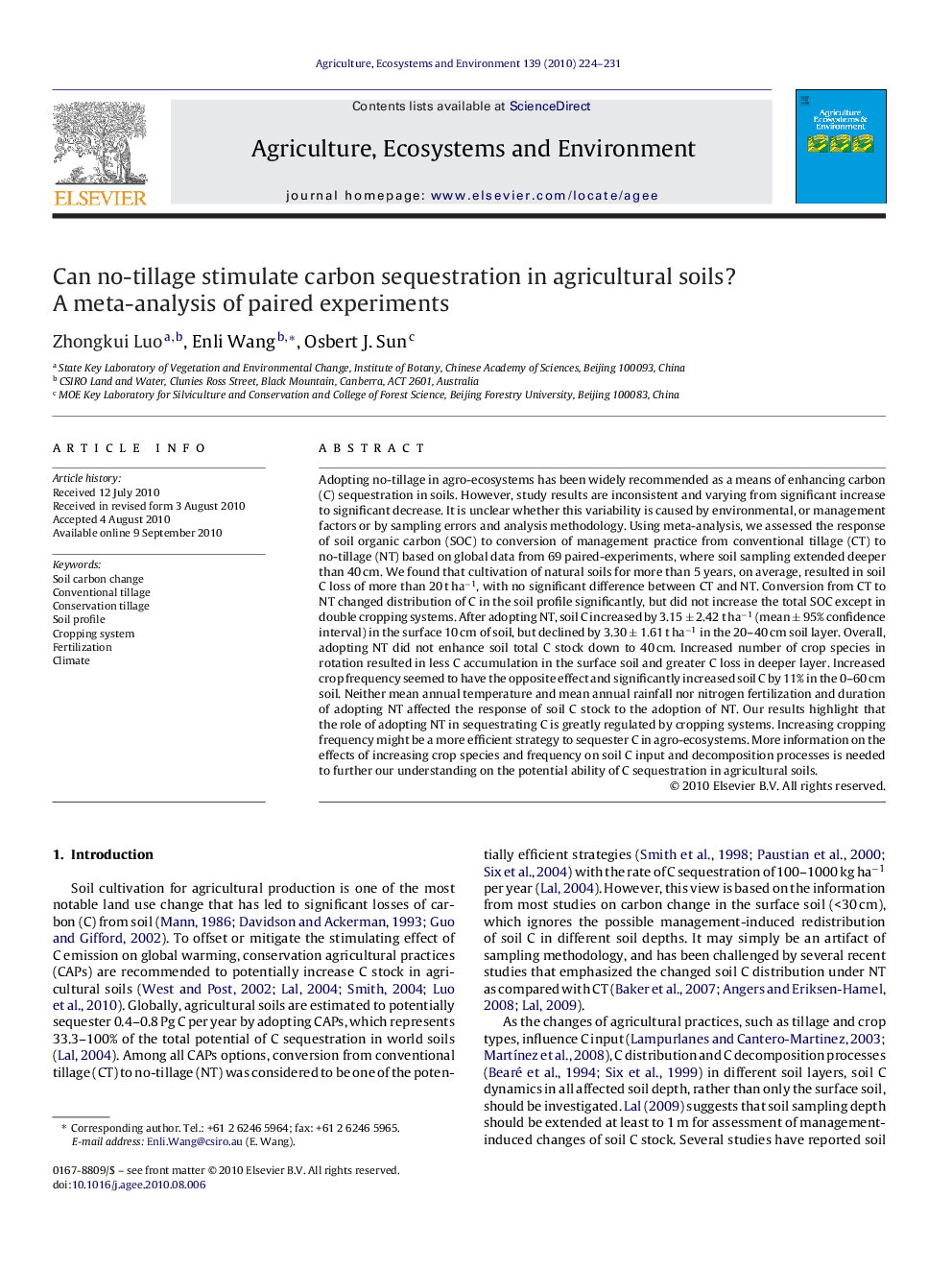| کد مقاله | کد نشریه | سال انتشار | مقاله انگلیسی | نسخه تمام متن |
|---|---|---|---|---|
| 2414913 | 1552112 | 2010 | 8 صفحه PDF | دانلود رایگان |

Adopting no-tillage in agro-ecosystems has been widely recommended as a means of enhancing carbon (C) sequestration in soils. However, study results are inconsistent and varying from significant increase to significant decrease. It is unclear whether this variability is caused by environmental, or management factors or by sampling errors and analysis methodology. Using meta-analysis, we assessed the response of soil organic carbon (SOC) to conversion of management practice from conventional tillage (CT) to no-tillage (NT) based on global data from 69 paired-experiments, where soil sampling extended deeper than 40 cm. We found that cultivation of natural soils for more than 5 years, on average, resulted in soil C loss of more than 20 t ha−1, with no significant difference between CT and NT. Conversion from CT to NT changed distribution of C in the soil profile significantly, but did not increase the total SOC except in double cropping systems. After adopting NT, soil C increased by 3.15 ± 2.42 t ha−1 (mean ± 95% confidence interval) in the surface 10 cm of soil, but declined by 3.30 ± 1.61 t ha−1 in the 20–40 cm soil layer. Overall, adopting NT did not enhance soil total C stock down to 40 cm. Increased number of crop species in rotation resulted in less C accumulation in the surface soil and greater C loss in deeper layer. Increased crop frequency seemed to have the opposite effect and significantly increased soil C by 11% in the 0–60 cm soil. Neither mean annual temperature and mean annual rainfall nor nitrogen fertilization and duration of adopting NT affected the response of soil C stock to the adoption of NT. Our results highlight that the role of adopting NT in sequestrating C is greatly regulated by cropping systems. Increasing cropping frequency might be a more efficient strategy to sequester C in agro-ecosystems. More information on the effects of increasing crop species and frequency on soil C input and decomposition processes is needed to further our understanding on the potential ability of C sequestration in agricultural soils.
Research highlightsOur meta-analysis based on data from 69 paired-experiments indicated that: ▶ Cultivation with conventional tillage (CT) and no-tillage (NT) resulted in comparable soil C loss comparing with adjacent natural soils. ▶ In most cases, adopting NT did not increase the total C in the soil profile. ▶ Climatic conditions and fertilization did not significantly regulate the response of soil C to the adoption of NT. ▶ However, the type of crops and cropping systems caused variations in soil C change after adopting NT. Compared with CT, NT in double cropping systems significantly increased soil total C, while NT in single cropping systems with more diverse crop types could lead to net reduction in total soil C.
Journal: Agriculture, Ecosystems & Environment - Volume 139, Issues 1–2, 15 October 2010, Pages 224–231